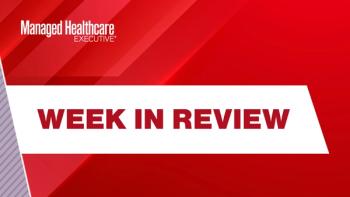
Less demand equals lower spending totals
Economists reported an "extraordinary" slow down in healthcare spending for 2010, largely because of the recession and unemployment.
The annual look back on healthcare spending provides a benchmark for measuring healthcare trends. CMS will issue predictions in the spring on health spending for coming years.
Developments in 2010 had a notable impact on insurers. Enrollment in private plans actually declined for the third consecutive year, dropping almost 2%. Lower enrollment, higher cost sharing and a shift by consumers to lower-cost plans kept the lid on private plan outlays for care. Premiums rose only 2.4%-continuing a decline that began in 2003.
This was the first time in seven years that premiums outpaced benefits. Per enrollee, premiums rose 4.4% in 2010, less than the 5.7% jump in 2009. But spending on benefits per enrollee increased only 3.7%, a big drop from the 6.9% rise in 2009, largely attributed to fewer elective hospital procedures and physician office visits plus a drop in the number of prescription drugs dispensed. Thus the gap widened between premiums and benefits, evidently because insurers raised premiums in anticipation of higher consumer demand for healthcare services, which failed to materialize. Now there are efforts to roll back premiums in many markets.
The shift in healthcare spending from private to public payers continued, as private employers paid 21% of the nation's healthcare bill, about $535 billion, down from a 23% share in 2007. Federal and state governments shouldered about 45% of the bill (up from 41% in 2007), largely because of more federal spending.
Much of the federal increase was attributed to enhanced federal matching funds to state Medicaid programs, which expired in 2011. Spending for both Medicare and Medicaid programs rose at lower rates than the previous year, as did outlays to hospitals, to physicians and for prescription drugs.
A key factor driving down Medicare outlays was much slower growth in the Medicare Advantage program. Actual spending on individual MA enrollees declined slightly due to risk adjustments, along with pressure on plans. Enrollment grew slowly, up only 5.6% to cover 11.3 million beneficiaries-much less than the 10.5% increase in MA beneficiaries in 2009. Spending on the MA program overall rose 4.7% in 2010-again, far less than the steep 15.6% jump in 2009.
INSURERS IN CHECK
The CMS analysts admit that the Patient Protection and Accountable Care Act (PPACA) had only a minimal impact on lowering healthcare spending, noting that it was too early to see much impact from that 2010 legislation. But Obama administration officials trumpet the report as a sign of the savings and gains likely to be achieved from health reform.
In addition to predicting even greater PPACA spending reductions, White House health policy aide Nancy-Ann DeParle says that the rising net cost of insurance illustrated why certain PPACA provisions are needed "to keep insurance companies in check." She says that implementation of the new medical loss ratio (MLR) standards will require insurers to spend at least 80% of premium dollars on health expenses, instead of on overhead and profits.
While HHS continues to implement PPACA, Congress will try once again to address the looming cut in Medicare payments to physicians as part of the never-ending struggle to find serious savings in federal government programs.
Newsletter
Get the latest industry news, event updates, and more from Managed healthcare Executive.





















































